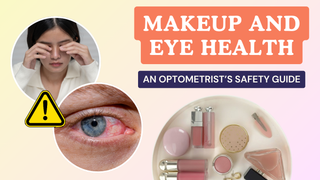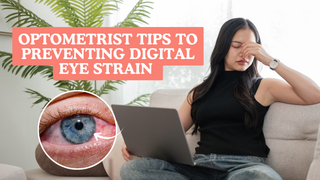Contact lenses offer a convenient solution for vision correction, with toric contact lenses playing a vital role for those with specific visual needs. In this article, we explore what toric contact lenses are and their importance for individuals with astigmatism.For many contact lens wearers, a common concern is the fear of a lens getting lost or stuck in the eye. This article aims to explore this issue comprehensively, providing practical advice for safely managing contact lenses and debunking common myths.
Understanding the Anatomy of the Eye
The human eye is intricately designed, and its structure prevents anything, including contact lenses, from slipping behind it. The conjunctiva, a protective membrane, covers the white part of the eye and connects to the inside of the eyelids, forming a barrier that makes it impossible for a lens to move into the space behind the eyeball.
What Happens When a Contact Lens Moves
It’s not uncommon for a contact lens to shift from its correct position, typically due to dryness, improper fitting, or accidental rubbing. The lens might slide under the upper eyelid, but it generally remains within the confines of the eye, making it retrievable with the right technique.
Removing a Stuck Contact Lens
For Centered or Off-Center Lenses:
-
Hand Washing: Start with clean hands to prevent contamination.
-
Rinse and Blink: Use saline or appropriate eye drops to lubricate and rehydrate the lens.
-
Eyelid Massage: Gently manipulate the eyelid to encourage the lens to move back into place.
-
Patience and Repetition: It might require several attempts to reposition the lens.
For Torn Lens Fragments:
- Locating the Fragment: Guide it to the corner of your eye for easier removal.
- Eye Flushing: Use saline solution for smaller pieces, helping them to move towards the eye's corner.
When to See a Doctor
Seek professional help if the lens remains stuck or if there's discomfort after removal. Regular eye exams are crucial to ensure the lenses fit correctly and to check for any potential eye health issues.
Myths and Misconceptions about Contact Lenses
The idea that a contact lens can get lost behind the eye is a myth. While a lens can dislodge, it's always within the eye's accessible areas. Understanding this can alleviate much of the anxiety associated with contact lens wear.
Best Practices for Contact Lens Wearers
To reduce the risk of lens displacement:
-
Ensure Correct Fit: Regular check-ups with an eye care professional are essential.
-
Avoid Rubbing Eyes: This can exacerbate displacement or damage the lens.
-
Follow Lens Care Instructions: Proper cleaning and storage are vital.
Additional Tips for Contact Lens Safety
-
Hydration: Keep your eyes well-moisturized to prevent dryness-related issues.
-
Lens Type Consideration: Choose the lens type best suited for your lifestyle and eye condition.
-
Monitoring Eye Health: Be attentive to changes in vision or discomfort, indicating a need for professional consultation.
Conclusion
Understanding the dynamics of contact lens wear and the anatomy of the eye is crucial for contact lens users. While it’s impossible for a lens to get lost behind the eye, proper care and handling are key to comfortable and safe lens usage.
For more insights on safe contact lens practices, comprehensive eye care advice, and to explore a range of suitable lens options, visit our blog!











